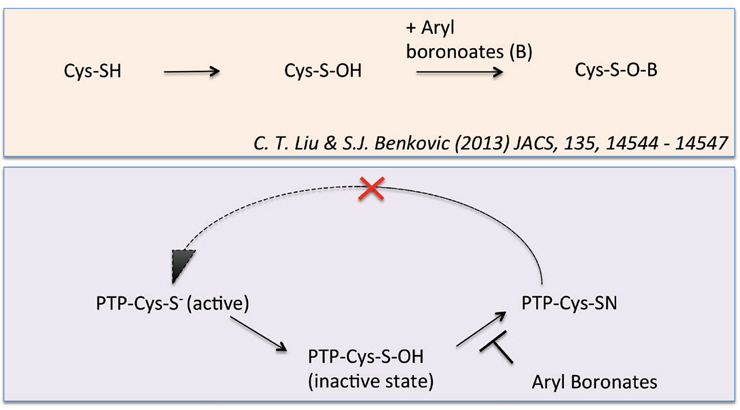Boronic Compounds for Use as Therapeutic Drugs
ID# 2015-4362
Technology Summary
The inventors identified promising boron-based compounds that trap phosphatases from the LAR/PTP-sigma/PTP-delta subfamily of the transmembrane PTP. These phosphatases play a role in neuronal development and path finding; they are potential targets for diabetes treatment. These phosphatases switch between the active and non-active forms by changing their redox states. The inventors found that boronate-compounds trap phosphatases when the proteins are in the oxidized state but not in the reduced state. One can chemically manipulate the activity of the phosphatases by keeping the proteins in the oxidized state for a prolonged time. This interaction between the boronate-compounds and the oxidized state of the LAR/PTP-sigma/PTP-delta phosphatase subfamily can be used to characterize redox regulation of other phosphatases, such as distinguishing the outcomes of cysteine-oxidation in PTPs.
Application & Market Utility
The subject technology may be useful for discovering and developing therapeutic drug compounds for treating human disease, including nerve injuries and therapeutic angiogenesis in diabetes mellitus. The technology may have utility for biotech companies that develop assays to monitor the redox regulation of the PTP family or other sulfenic acid-regulated proteins.
Next Steps
Seeking research collaboration and licensing opportunities.

